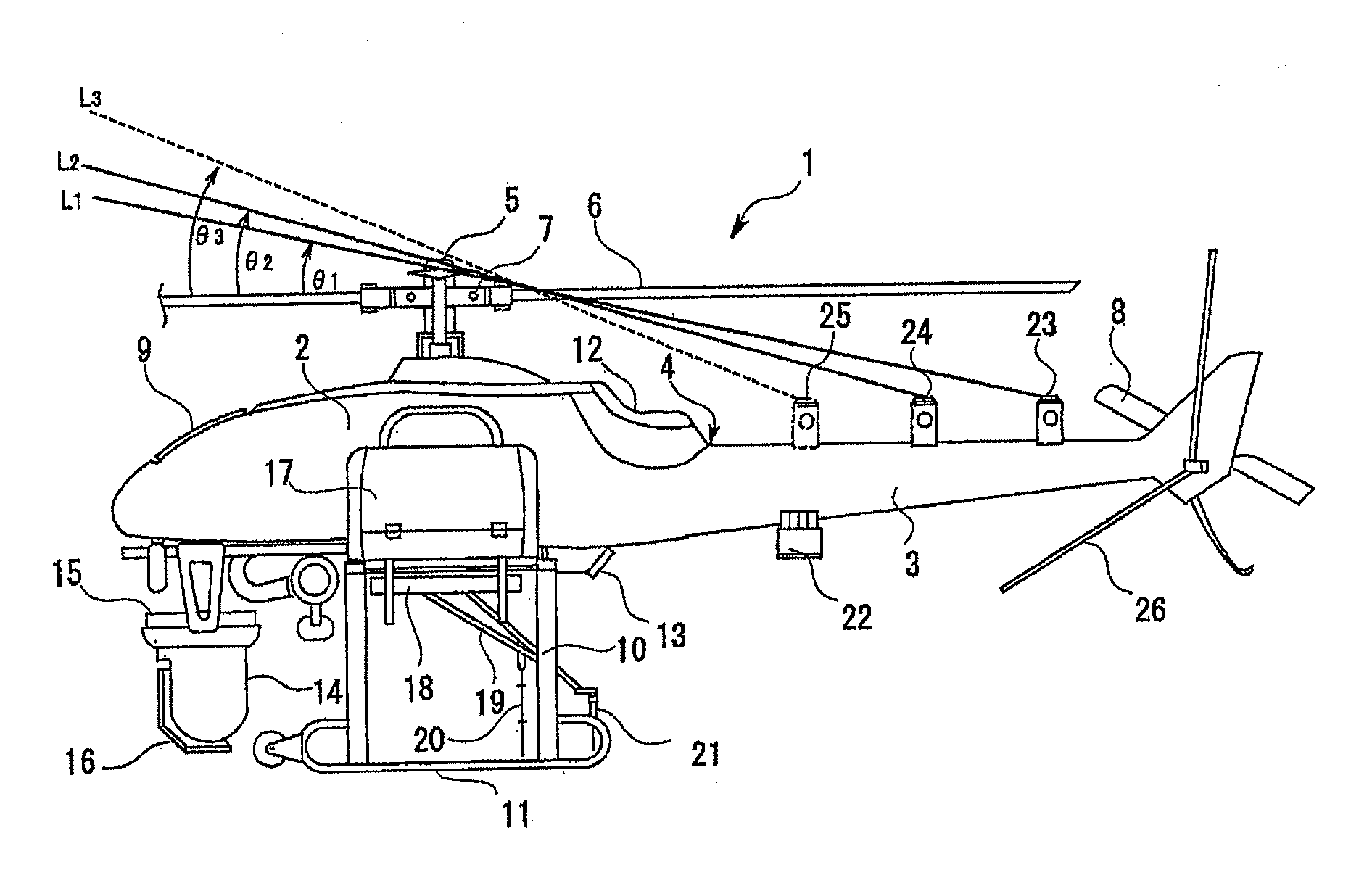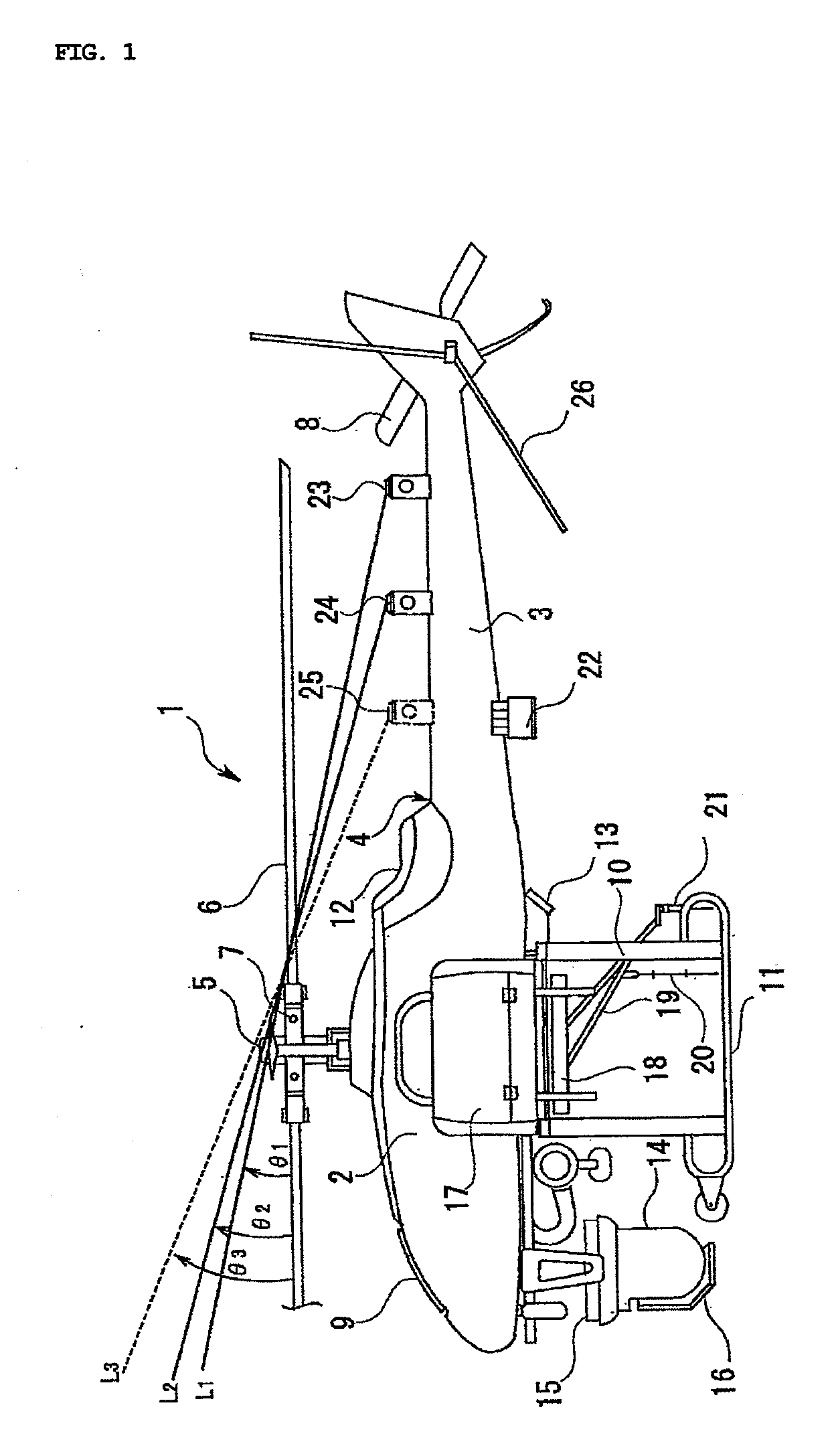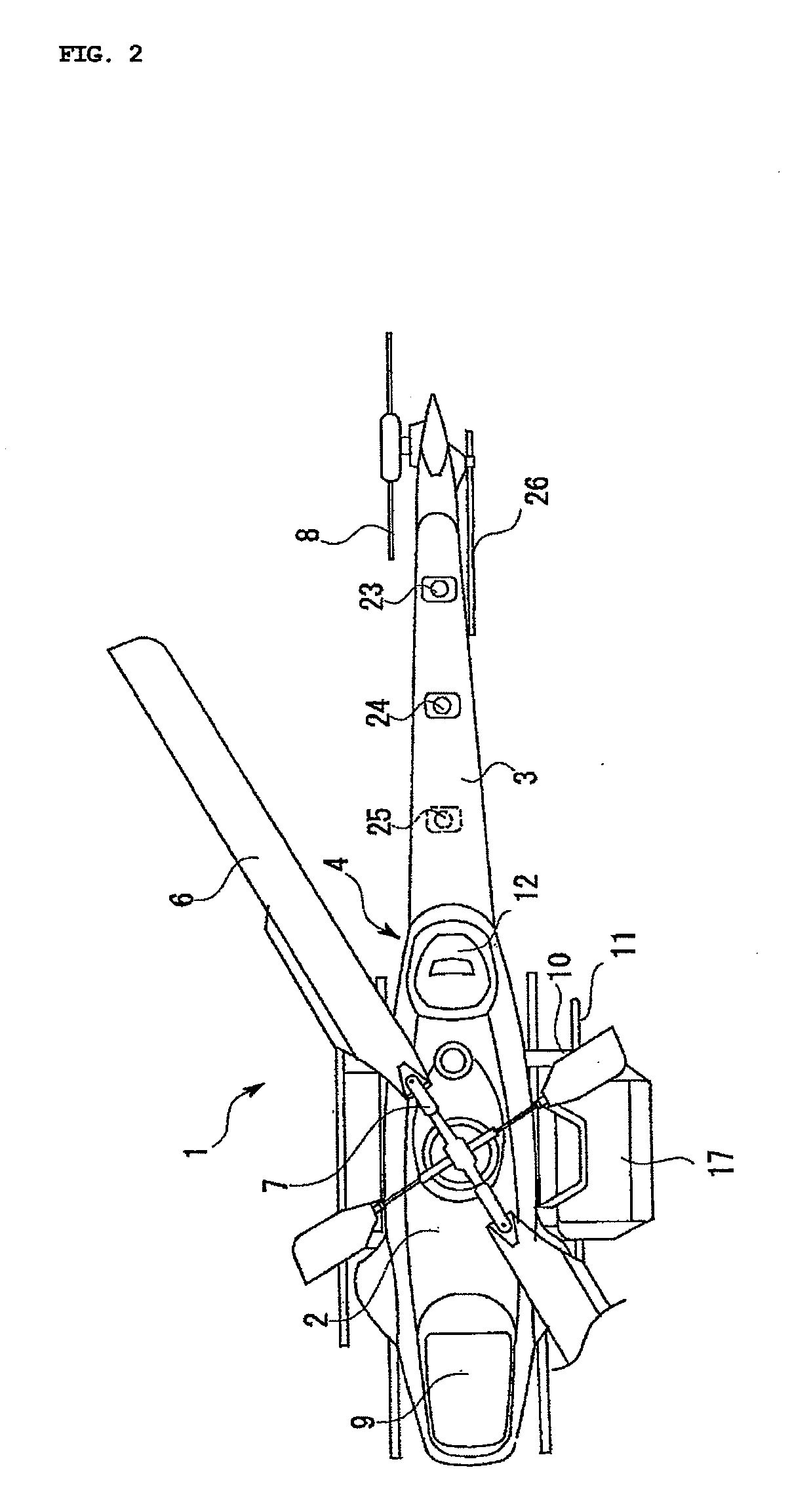[0021]In view of the circumstances noted above, an aspect of the least one of the embodiments disclosed herein is to assist the GPS sensors for performing a program flight by autonomous control, in an unstable characteristic accompanying the usage thereof. Specifically, an object of the present invention is to provide a
system that can detect a current location of the unmanned helicopter and thereby perform a program flight by autonomous control even if the number of GPS satellites from which the
system receives signals (which can be radio
waves) is less than a desired number of satellites, or even if data communication is interrupted.
[0022]In accordance with one aspect of the invention, an unmanned helicopter is provided. The unmanned helicopter comprises an airframe with a plurality of GPS antennas disposed thereon, the GPS antennas configured to receive a
signal from at least one GPS
satellite. The unmanned helicopter also comprises an autonomous controller configured to control the helicopter based at least in part on airframe data and flight route data and to communicate with a
ground station, the controller comprising a plurality of GPS receivers, each
receiver corresponding to one of the plurality of GPS antennas and defining therewith a GPS device configured to detect a location of the airframe, the GPS devices being different from each other.
[0021]In view of the circumstances noted above, an aspect of the least one of the embodiments disclosed herein is to assist the GPS sensors for performing a program flight by autonomous control, in an unstable characteristic accompanying the usage thereof. Specifically, an object of the present invention is to provide a system that can detect a current location of the unmanned helicopter and thereby perform a program flight by autonomous control even if the number of GPS satellites from which the system receives signals (which can be radio
waves) is less than a desired number of satellites, or even if data communication is interrupted.
[0021]In view of the circumstances noted above, an aspect of the least one of the embodiments disclosed herein is to assist the GPS sensors for performing a program flight by autonomous control, in an unstable characteristic accompanying the usage thereof. Specifically, an object of the present invention is to provide a system that can detect a current location of the unmanned helicopter and thereby perform a program flight by autonomous control even if the number of GPS satellites from which the system receives signals (which can be radio waves) is less than a desired number of satellites, or even if data communication is interrupted.
[0021]In view of the circumstances noted above, an aspect of the least one of the embodiments disclosed herein is to assist the GPS sensors for performing a program flight by autonomous control, in an unstable characteristic accompanying the usage thereof. Specifically, an object of the present invention is to provide a system that can detect a current location of the unmanned helicopter and thereby perform a program flight by autonomous control even if the number of GPS satellites from which the system receives signals (which can be radio waves) is less than a desired number of satellites, or even if data communication is interrupted.
[0063]A distance K between antennas (refer to FIG. 6) is set to a length between one
wavelength and two wavelengths of a GPS radio wave in order to reduce an influence of a reflected wave caused by each
GPS antenna. Specifically, since one
wavelength of the GPS radio wave is about 20 cm (precisely, λ=19 cm), the distance K can be set to about 30 cm, which is between one
wavelength, 20 cm, and two wavelengths, 40 cm.
 Login to View More
Login to View More  Login to View More
Login to View More 


